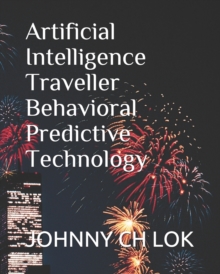Recently, many researchers have studied pro-environmental consumption and household indexes as well as suicide rate predictions using messages posted by internet users on Google trend, Tweets etc. channel. Whether can environmental consumption be predicted by (AI) deep-learning technological internet channel to influence how many travelers choose to go to the country to travel? How can impact the pro-environmental consumption attitudes of green policies to influence how many travelers choose to go to the country to travel? For example, Korea scientists estimated pro-environmental attitudes using search query data provided by Google trend and confirmed through regression analysis, that pro-environmental attitude has a positive correlation with the pro-environmental attitude index. They also explained that environment-friendly attitude of residents plan an important role in policy making. In the past, most household consumption indexed were calculated through surveys, but (AI) deep-learning technological tool " big data" have recently gained research attention ( Lee et al. 2016). So, (AI) deep learning technology can attempt to gather whether how many Korea residents who concern environment pollution to influence their eating green food attitude then to judge whether how many Korea residents hope to leave their country to travel anywhere either high risk environment pollution countries to travel or low risk environment pollution countries to travel in the future.It seems that (AI) deep-learning technology can help agricultural export countries' farmers , e.g.
US, UK, Canada, New Zealand, Australia, Japan, China, India etc. they can predict environmental behavioral consumption to any rice, tomato, potato , fruit, vegetable etc. plant food consumers. The beneficial advantages to them include as below:(a)Assuming they know their countries' weather, when it has less rain to cause drought or when it has more rain in any seasonal time in the year. They can choose not to grow any kinds of above these plant food to avoid loss.(b)They can make any kinds of above these plant food price raising after their prediction of these bad seasonal time to cause their plant food shortage supply challenge. Because these plant food consumers' demand number is more, but the supply of these above plant food supply number is less. However, due to they had predicted when the bad seasonal time can not allow them to grow these above plant food before. So, they have enough time to grow many these above plant food number in predictive good seasonal time to prepare to supply to their plant food import countries' plant food consumers to eat. Thus, these predictive environmental consumption plant food export countries can raise their plant food price to sell to them. When, the other non-pre-predictive environmental consumption plant food export countries can not supply any one of those plant food to them to eat, due to the bad climate to cause them can't grow any one of these plant food to export to sell.Thus, (AI) deep-learning technology can be applied to predict how to raise the plant food supply number in order to raise price to the import plant food countries consumers to eat, due to they feel difficult to buy these plant food to eat in the bad climate seasonal time in whole year.(c)(AI) deep-learning technology can help climate scientists to find what reasons cause their countries; rain sudden increases or cause their countries' rain sudden decreases. After its gathering data analysis, it can assist climate scientists to find solution methods to attempt to control the rain level can be right falling down level to let agricultural export farmers who can grow their plant food to sell to agricultural import countries in whole year.

